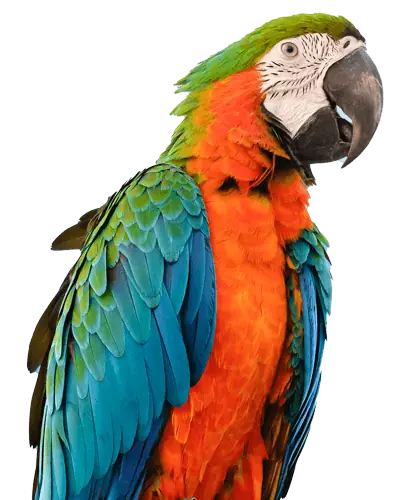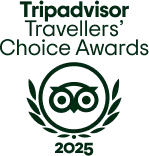Flying vs. Driving Between Safari Parks in Tanzania: Pros, Cons & Expert Tips
Tanzania is home to some of the most iconic safari destinations in Africa, from the endless plains of the Serengeti to the majestic Ngorongoro Crater and Tarangire National Park. When planning your safari, one of the most important decisions is how to get between parks—by road or by air.
At Serengeti Clarity, we help travelers make informed choices, offering personalized advice to maximize wildlife viewing, comfort, and cultural experiences. Here’s a detailed guide to help you decide the best way to travel between Tanzania’s top safari parks.
Option 1: Flying Between Safari Parks ✈️
How It Works
Domestic flights in Tanzania operate on small bush planes (12–40 seats), connecting major safari hubs like Serengeti, Ngorongoro, Tarangire, Selous, and Ruaha. Departure points include Arusha, Dar es Salaam, and Zanzibar.
✅ Advantages of Flying
- Save Time: Flights drastically reduce travel hours. Example:
- Arusha → Serengeti by car: 6–8 hours 🚗
- Arusha → Serengeti by flight: ~1 hour ✈️
- Scenic Aerial Views: Marvel at Mount Kilimanjaro, the Great Rift Valley, and the Serengeti plains from above.
- Less Fatigue: Avoid long, dusty, and bumpy road trips.
- Access Remote Parks: Parks like Mahale Mountains or Selous Game Reserve are easier to reach.
- More Safari Time: Arrive refreshed and ready for game drives immediately.
❌ Considerations
- Luggage Restrictions: Most flights allow 15 kg (33 lbs), soft-sided bags only.
- Missed Cultural Experiences: Flying skips scenic villages, local markets, and roadside wildlife spotting.
- Weather Delays: Flights may be delayed during the rainy season.
💡 Best For: Travelers with limited time, higher budgets, or visiting remote parks.
Option 2: Driving Between Safari Parks 🚙
How It Works
Travel by 4×4 safari vehicle, typically a Land Cruiser, with a private guide/driver.
✅ Advantages of Driving
- Cost-Effective: Can be up to 50% cheaper than flying, especially for groups.
- Wildlife Spotting En Route: Begin your safari from the moment you leave the lodge—see giraffes, zebras, or elephants along the way.
- Flexibility: Stop for photography, meals, or impromptu cultural experiences.
- Immersive Cultural Experience: Pass through Maasai villages, rural towns, and scenic landscapes.
- No Luggage Limits: Pack freely without restrictions.
❌ Considerations
- Long, Rough Drives: Road trips can take 6–10+ hours on bumpy roads.
- Tiring: Extended sitting on dusty or muddy routes can be exhausting.
- Potential Delays: Weather, traffic, or vehicle issues may slow travel.
- Limited Access: Some remote parks like Ruaha, Mahale, or Katavi are challenging by road.
💡 Best For: Budget travelers, adventure seekers, and those who want a full overland safari experience.
Flying vs. Driving: Quick Comparison
| Feature | Flying ✈️ | Driving 🚙 |
|---|---|---|
| Travel Time | Fast (1–2 hrs) | Long (4–10 hrs) |
| Comfort | Smooth, avoids rough roads | Bumpy, can be tiring |
| Scenic Views | Aerial panoramas | Close-up landscapes & wildlife |
| Wildlife Spotting | Starts at park | Begins on the road |
| Cultural Experience | Limited | High—villages, markets, local life |
| Luggage Limits | 15 kg soft bags | No restrictions |
| Flexibility | Fixed flight times | Stop anytime |
| Accessibility | Remote parks & islands | Northern Circuit parks |
Expert Tips from Serengeti Clarity
- Short on time? → Fly to maximize your safari hours.
- On a budget? → Drive to save money, especially with family or group travel.
- Want cultural immersion? → Drive to experience Tanzanian daily life firsthand.
- Visiting remote parks? → Flying is the easiest option.
- Love adventure? → Drive for the full overland safari thrill.
- Prone to motion sickness? → Flying avoids rough terrain.
The Best of Both Worlds
Many savvy safari travelers combine driving and flying:
- Drive shorter legs of the Northern Circuit (Arusha → Tarangire → Ngorongoro → Serengeti).
- Fly back from Serengeti to Arusha or Zanzibar to save time at the end of your safari.
💡 Tip: Ask your Serengeti Clarity safari planner to customize your itinerary with the perfect mix of drives and flights, balancing cost, adventure, and comfort.
Final Thoughts
Choosing between flying or driving depends on your schedule, budget, and safari goals:
- Drive if you: want scenic road trips, cultural encounters, and cost savings.
- Fly if you: want to maximize game-viewing time, visit remote parks, or prefer comfort.
At Serengeti Clarity, we design itineraries that combine both for a seamless, unforgettable safari experience—ensuring you see more wildlife, enjoy every park, and travel in comfort.
Which option would you choose for your Tanzanian safari? Comment below—we’d love to help you plan your perfect trip!











